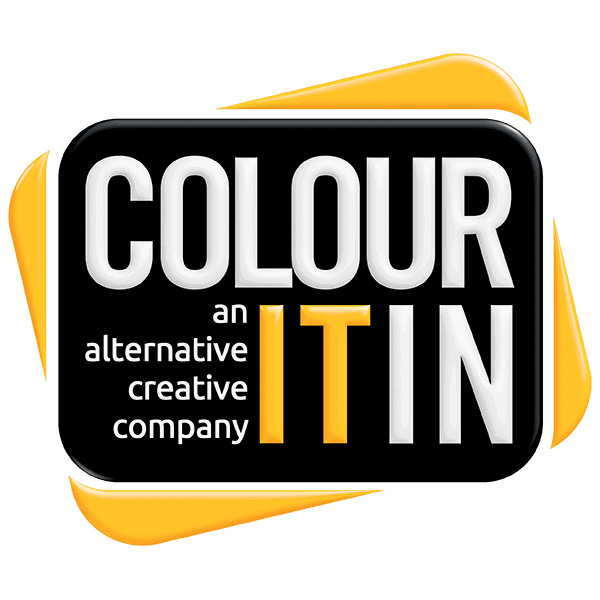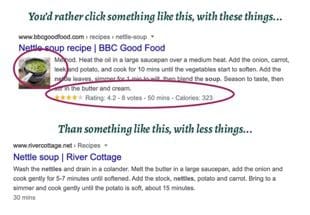Courtesy of our Partners at Nettl approx. 8 minute read
Ever had a question on your mind, no matter how trivial, and you just need to find the answer to it?

So what do you do? Head to Google, right?
You ditch what you’re doing (or should be doing) and open a new tab. Or whip out the smartphone. Or wake up your smart speaker.
That’s because the ‘not knowing’ creates a knowledge gap. It means we can’t close off a mental task in our head and this unfinished business leads to an uncomfortable feeling of unrest. So we need to fix it.
Fill the knowledge gap
The need to fill a knowledge gap is pretty much the only reason people head to search engines for, well, anything. They’re looking for something. An answer to a question, or useful information.
Oh, you’re thinking ‘Not always. Sometimes people just want to be entertained. They’re heading to the internet to find cat memes’. We hear ya.

At least for now anyway. Google is doing their best to monopolise the information too, but that’s another story.
The fact is, when people search, they’re looking to find something, or someone, that can help solve whatever problem is on their mind. There’s a reason they’re called search queries.
No shortage of suitors
Luckily for us there’s no shortage of suitors to answer our query. Usually millions of results, in around half a second. A carefully selected assembly awaits our consideration on the page before us and we’re spoiled for choice.
Like a ‘Britain’s Got Talent’ audition, we get to click through, and sample the content. If it’s not what we’re looking for, we can click ‘back’ on the browser and light up our big red X buzzer. If the page looks good, it’ll no doubt captivate our attention a little longer.
But what if we, as businesses, are the auditioning hopefuls on a search engine results page? Our website, standing nervously on stage. As marketers, we’re the family members waiting in the wings, anxiously clutching on to Ant and Dec.

Using the same analogy, you’d have 100 hopefuls come along to the audition, 10 get to stand on the stage, but only a chosen few get the chance to show what they can do.
Some websites won’t leave the green room. It’s like turning up to the auditions each year and not getting a chance to show what you can do.
If you were a budding entertainer, you’d want to do all you can to increase your chances of getting through.
And if you’re serious about increasing the amount of attention your website receives then you’ll want to do all you can to improve your CTR.
What is CTR?
CTR stands for Click Through Rate. Simply put, it’s about how many clicks you get vs how many people saw your search listing (or advert, or email).
For Organic Search Listings, we’re specifically talking about how many clicks your website received in relation to how often your website listing appeared for that search term.
It’s calculated as a percentage.
Number of Clicks / Number of Views (or ‘impressions’) = CTR
So if your ad is shown 1000 times and received 150 clicks, the calculation would be:
150 / 1000 = 0.15
Your click through rate would be 15%
Congrats, that’s not bad. We’ve seen much worse. And better.
Oh really? What’s a good CTR?
It depends. And what’s good for you will depend also.
But just to give you some context, the average CTR on Google Ads is around 2%
Email and social media CTR’s hover around 2.5 and >1 respectively. Although email’s 2.5 isn’t so bad when you factor in how many engaged people you can reach in one go extremely cost-effectively. That CTR also has to first hurdle the open rate, which is often much higher (at around 30-50%) and can convey a lot of important messaging.
For comparison, high listing organic content pieces can typically get click through rates of 30% or more. The top organic position in Google’s search results has an average CTR of around 32%.
Why, there are simply oodles of benefits my friend…
- More clicks = more visitors.
- A better CTR correlates with a higher Conversion Rate.
- Organic listings achieve significantly better CTR results than Ads.
- Having a better CTR improves your Ranking Position.
And the best bit? It’s like compound interest. Another Flywheel Effect.
Improving CTR by 3% can move you up one position. And moving up one position in Google will increase your relative CTR by an average of 30.8%.
“Moving up from #6 to the #5 spot will result in 53.2% more clicks” 1
How do I improve CTR?
Here are 10 tried and tested strategies to help you improve your CTR
#1 Question?
Title tags that contain a question have a 14.1% higher CTR vs. pages that don’t have a question in their title. Makes sense. We’ve established that people head to Google to search for answers. Using a question suggests you have the answer in the article. You’d be miffed if it didn’t.
#2 Keywords
Be sure to include some of your targeted keywords and key phrases in your Title and Description. It’s reassuring for people to see and, often pulled out in bold text, helps to subconsciously match your site with their expectations. But don’t be too keyword heavy. Keep it natural, relevant and remember to ‘write for humans’, not bots.
#3 Use descriptive URL’s
Using descriptive URL’s (rather than generic ones) improve CTR by as much as 25%. A very simple fix if you’re not already doing it. All it means is include words that describe the content, not generic terms and numbers. So nettl.com/uk/how-to-improve-your-ctr/ rather than nettl.com/uk/?p=41095
#4 Write effective description tags
Your copy should explore emotions and feelings. Tap into emotions which the user is feeling right now. How might they feel once you help them? Power words are good, but avoid using too many. Amazing, simple, exclusive, proven, inspiring – all good in moderation. But “12 Astonishing secrets for unprecedented awesome success” might be a bit click-baity for most.
#5 Match intent
The first four points all have one thing in common – user intent. We’re matching our copy with how we believe the user is feeling right now and what we think they’re looking to do. The closer we can match intent, throughout the entire journey, the more relevant our content will become and the better the UX will be for the individual. A match made in heaven. Better buy a hat.
Let’s get visual, visual, I wanna get visual. Let’s get into visual. If Olivia Newton-John had anything to say about search engine optimisation, it’d be all about going to town on the structured data / schema markup. That’s all the extra visual elements you might see on a listing. You know, images, recipe info, show times. Reviews and ratings are the best, massively improves click through rate. As long as they’re any good, obvs.
#7 What makes you so special?
The Search Engine Results Page is an audition. What makes you so special? There’s not an awful lot of genuine uniqueness left in the world these days, but do take the opportunity to let people know what product and service values you believe in. Are your organic gluten-free cookies baked by Buddhist alpacas who volunteer on weekends? Well, why didn’t you say so? I’ll take two-dozen.
#8 Include promotions
Depending on what stage people are at in the buying journey, people will often head to Google when they’re ready to make a purchasing decision of some sort. If you have a promotional offer available, let them know in your listing. That could be a limited time discount, a free trial period, initial consultation. Or perhaps you’re offering an incentive like a free download, calculator or custom report. Dangle the carrot right there in the results and let them know what to expect.
#9 Call To Action (CTA)
This old marketing chestnut ain’t going nowhere. From the golden age of advertising right through to the UIUX architecture of today, giving a user a clear CTA to guide them towards the next step remains a major league principal. Sure, including promotions can increase urgency, that helps. But what next? Let your copy explain that the user will be able to browse, buy, book, download, signup, get a free consultation or instant decision.
#10 Test and Tweak
Some marketing works. Some doesn’t. The goal is to find out what works best and do more of that. There are tried and tested principles, of course, activities that consistently produce results. But businesses that maximise their marketing results also embrace experimentation. To find out what copy works best, split test (A/B test) headlines using Google ads, email campaigns and social media posts. It could make a huge difference.
Want to learn more?
Serious about growing your business? Learn more and get your free audit Here



